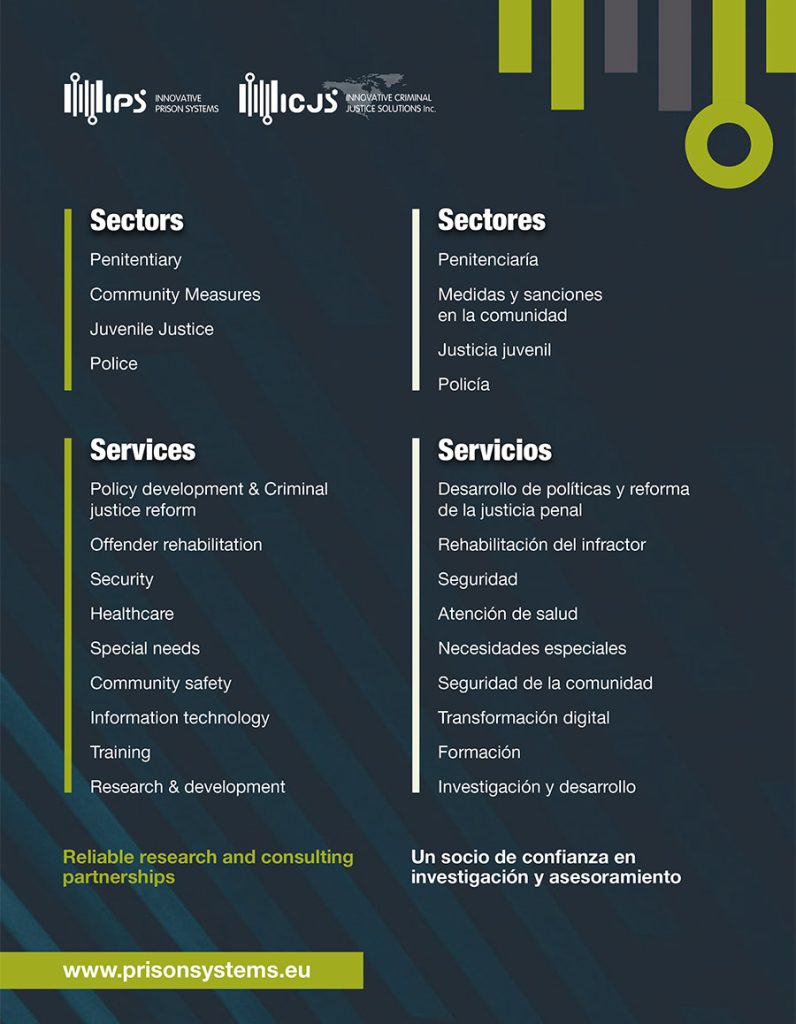Article
Danielle S. Rudes
Community corrections agencies desire to yield positive outcomes that benefit clients and their families and the broader community. To this end, many community corrections agencies regularly embark organizational change processes such as program, policy, or practice reform to improve their work in ways that lead to more positive, efficient, and effective outcomes.
In fact, many of community corrections’ reforms include evidence-based practices (innovations scientifically shown to work by producing statistically significant outcomes in the desired direction). And yet, despite noble effort, many reforms do not stick, many create unintended consequences that lead to additional necessary reforms, and many simply fail by not producing the desired outcomes.
The big question then is: “What goes wrong with reform?” The short, yet decidedly complex, answer is…legitimacy.
Legitimacy “is a generalized perception or assumption that the actions of an entity are desirable, proper, or appropriate within some socially constructed system of norms, values, beliefs, and definitions (Suchman, 1995, p. 574). Put simply, legitimacy is the perception by individuals involved in an event (like a reform) that it is a good idea and that it has merit and/or value.
While legitimacy joins several other focal concerns held by individuals within organizations during reform including efficiency and effectiveness, legitimacy may hold the strongest influence on the ultimate success of the reform or change.
In a multi-year study of community corrections agencies at the Federal level including probation, problem-solving courts (e.g., drug courts, reentry courts), and a halfway house contracted by probation, our research team worked with staff to adopt, implement, and sustain contingency management—a practice that is considered evidence-based with substance use disorder treatment but not yet in criminal legal settings.
The goal of the project was to introduce these agencies/individuals to contingency management through intensive training on the components and supporting evidence. Next, our research team worked with community corrections staff within our sites across the U.S. to develop their own contingency management plans for use with their clients. Then, researchers conducted both a process and outcome evaluation of the implementation. Findings from this project highlight important and complex information about why and how reforms stick and what may contribute to their failure.
Contingency management is a behavioral change modification framework that includes incentive-based decision making where individuals know that rewards are possible, they know what those rewards may be (and they are meaningful), and they know which behaviors they must exhibit to earn a reward or incentive. This framework is similar to the way that animal trainers work with dogs, dolphins, and even tigers. If you have ever attended a dolphin show at an aquarium you know exactly what I am talking about.
Over time, the trainer teaches the dolphin that she will receive a mouthful of fish if she performs a trick as taught. If she does not perform the trick, the trainer does not hit her with a stick (a disincentive or punishment).

Rather, the trainer simply withholds the fish treat. In essence, the trainer and the dolphin develop a contractual system where each performs their task according to the established rules and if performed well each are incentivized. The trainer gets to see the trick performed successfully on command and the dolphin gets a yummy snack. Through this process, the dolphin learns that good behaviors lead to desired reward.
This is the same framework we used in community corrections. For example, in drug courts, the court team wanted clients to abstain from substance use. So, as part of the project, the court developed a system of behavioral goals and incentives.
Our research team trained the community corrections teams that no more than three goals were best (as it is hard for individuals to focus on numerous goals simultaneously and this often leads to failure) and the larger goals (e.g., sobriety) should be broken down in the smaller, more manageable goals (e.g., days without use, attending treatment) so clients could earn incentives early and often and so they could see their progress along the way.
The court team also developed a behavioral contract so that both the staff and the clients knew exactly what behaviors were expected and what the incentives each behavior would earn.
Our research team collected numeric and perceptual data during the entire process from the learning sessions, to the creation of specific contingency management protocols in each community corrections site, to the implementation of the incentive plan, and all the way through about a year after implementation to capture important data regarding the sustainability of each site’s contingency management program.
We found that some community corrections sites implemented contingency management with success, other struggled, and a couple of sites failed to implement contingency management even with initial and continued assistance from the research team. Why?
One of the big take-aways from this study, of course, considered if and how contingency management worked in community corrections settings, but it was the “worked” part of that statement that provides a lot of leverage toward understanding if, how, and why reforms work. Only two of eight sites succeeded in fully adopting, implementing, and sustaining contingency management (both were problem solving courts). While the successful sites had different timelines and approaches during the process one commonality was a sense of strong sense that contingency management was a legitimate practice.
In fact, these two sites embraced legitimacy of three types: 1) pragmatic legitimacy as they sensed contingency management benefited them and their clients and it aligned with their broader interests and values; 2) moral legitimacy or a sense that contingency management was the right thing to do, and 3) cognitive legitimacy as it meshed with both their larger belief system and with the experienced reality of their daily working lives. In fact, the legitimacy for contingency management was so strong in these two sites that the practices they implemented became taken for granted during the study and became normatively routine. What is markedly different though is what occurred in the sites where contingency management was not fully implemented or not implemented at all (failed).
In the mixed sites (also two problem solving courts), legitimacy regarding contingency management was moderate or weak. In these cases, the staff in these sites also saw contingency management as weak(er) in its efficiency and effectiveness. Staff here noted contingency management, “takes a lot more time” and “I will have to work contingency management around how I’ve been supervising my guys.” Others noted they did not see any noticeable outcomes from their use of contingency management and thus questioned it as a viable tool.
In the four sites where contingency management was not implemented (two problem solving courts, one probation unit, and one halfway house), staff felt weak or no legitimacy for contingency management. Although these staff were initially supportive of contingency management during training sessions, their views weakened or changed as the project continued.
A host of reasons may provide some explanatory power. These include: 1) staff feeling that they were already using evidence-based practices and did not need any more; 2) staff believing the community and some/all of their stakeholders would not approve them providing incentives for behavior the community felt clients should already be doing, and 3) some staff felt the payoff was not worth the amount of work required to implement contingency management.
In these ways and others, staff in the failing sites believe contingency management was more of a burden than a benefit. That is, they did not see contingency management as legitimate.

So, how can community corrections agencies improve and/or ensure legitimacy among their staff when they are trying to implement a change or reform?
There is no easy answer, but our study suggests the key may be in thoroughly and thoughtfully preparing an organization and its staff to implement reform long before implementation begins. This is relatively uncommon on community corrections where changes in policy, practice, and/or programs often comes from external pushes (e.g., community leaders, available funding/resources, state or legislative mandates) or from internal pushes (e.g., community corrections leaders).
In essence, many reforms are decided by individuals who are not the individuals who will implement the reform. This creates a recipe for failure because legitimacy starts long before a reform takes shape…it starts with the identification of the problem and listening to (really hearing) from lower-level staff about what issues they face and only then, developing changes to address these challenges.
In our study, for example, perceptions of the legitimacy, efficiency, and effectiveness of contingency management was not a key factor in the site’s successful implementation.
That is, just because a leader or supervisor sees a reform as legitimate, the staff still may not. When that happens, the reform/change fails.
There is no cookie-cutter way to do this, no specific rule book or “how to” manual…the process varies within each organization location. However, organizational change readiness is crucial for reform success.
Not only will legitimacy (developed before the reform begins) improve adoption and implementation…it will sustain these reforms in the future so all of the work that teams do to design and implement does not become “just another thing we tried.”
It will become who they are, what they do, and it will show the staff, clients, and community that the implementing agency cares about them and cares enough to look deep within themselves and change – the very same thing community corrections agencies are asking of the clients they supervise.
LReference for the paper this article is based on
Rudes, D. S., Portillo, S., & Taxman, F. S. (2021). The legitimacy of change: Adopting/adapting, implementing and sustaining reforms within community corrections agencies. The British Journal of Criminology, 61(6), 1665–1683.
News about this study
https://news.ku.edu/2021/04/27/study-finds-criminal-justice-staff-must-view-reforms-legitimate-them-be-sustained
https://thecrimereport.org/2021/04/28/mind-over-matter-agencies-need-to-believe-in-reform-for-meaningful-change/
https://schar.gmu.edu/news/2021-05/new-ace-study-shows-reforms-correctional-settings-require-community-buy
Additional references from this study
Murphy, A., Rhodes, A. G., & Taxman, F. S. (2012). Adaptability of contingency management in justice settings: Survey findings on attitudes toward using rewards. Journal of Substance Abuse Treatment, 43(2), 168-177.
Portillo, S., Rudes, D. S., & Taxman, F. S. (2016). The transportability of contingency management in problem-solving courts. Justice Quarterly, 33(2), 267-290.
Portillo, S., Rudes, D. S., Viglione, J., & Nelson, M. (2013). Front-stage stars and backstage producers: The role of judges in problem solving courts. Victims & Offenders, 8(1), 1-22.
Rudes, D. S., Taxman, F. S., Portillo, S., Murphy, A., Rhodes, A., Stitzer, M., Luongo, P.F. & Friedmann, P. D. (2012). Adding positive reinforcement in justice settings: Acceptability and feasibility. Journal of Substance Abuse Treatment, 42(3), 260-270.
Sloas, L., Murphy, A., Wooditch, A., & Taxman, F. S. (2019). Assessing the use and impact of points and rewards across four federal probation districts: A contingency management approach. Victims & Offenders, 14(7), 811-831.
Taxman, F. S., & Rudes, D. S. (2013). Implementation of contingency management in probation agencies using a case controlled longitudinal design: A PDSA study protocol. Health & Justice, 1(1), 1-11.

Danielle S. Rudes, Ph.D, is a Professor of Criminal Justice and Criminology at Sam Houston State University and the Deputy Director of the Center for Advancing Correctional Excellence (ACE!). She is the BJA Fellow on the Enhancing Corrections Spaces & Cultures project (PI). Dr. Rudes is an expert qualitative researcher whose methods include ethnographic observation, interviews, and focus groups with over 20 years of experience working with corrections agencies and problem-solving courts at the federal, state and local county levels including prisons, jails, probation/parole agencies and courts. She is recognized for her work examining how social control organizations and their middle management and street-level workers understand, negotiate, and at times, resist change.



